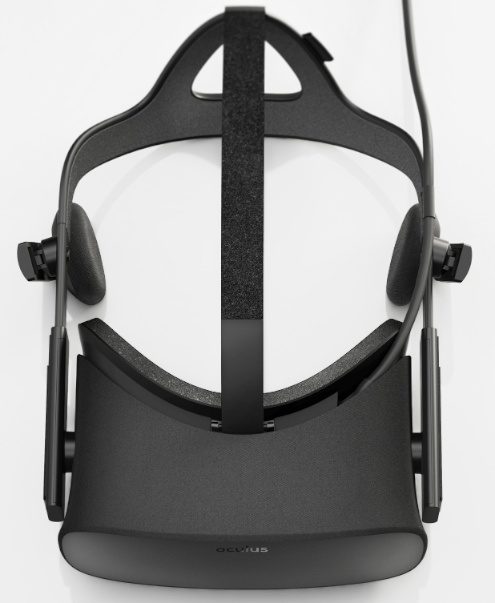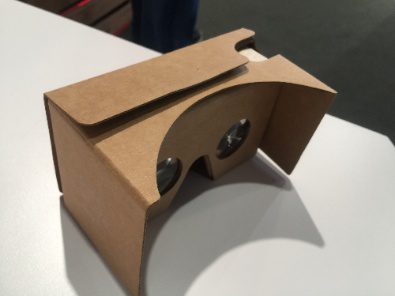Also see: 10 Top Virtual Reality Apps
And: Virtual Reality vs. Augmented Reality: the False Debate
Virtual reality companies are certainly enjoying a hot market. Yet some VR companies are far better positioned than others.
Virtual reality companies face one key truth: VR is one of those computing ideas that has been far ahead of the capabilities of existing technology. The idea was solid but the silicon and software just have not been there to make it a genuine reality, or at least a believable one.
Those same virtual reality companies face potentially very good news: This year might be the one where we finally have a breakthrough in terms of technology. Dozens of hardware and software companies are spending hundreds of millions on R&D into virtual reality that is realistic and doesn’t make you nauseas when you use it, a common side effect of VR headsets.
Consumer interest in VR is increasing. VR hardware sales alone are expected to grow from $1.4 billion in 2016 to $2.4 billion in 2017, according to virtual reality consulting firm KZero. For VR software, which is mostly video games right now, the company estimates sales of $2.8 billion by 2018.
Let’s take a look at some of the virtual reality companies that are leading the way. This is not a complete list at this early day, simply the 20 VR companies standing tall in the current market.
Virtual Reality Companies Leading the Way
Facebook shelled out $2 billion for Oculus even before the device shipped, which should indicate its potential. Unfortunately it’s been a rough ride for Oculus, with lawsuits over contributions made by John Carmack, the highly respected gaming developer who left his game company to join Oculus. The game company’s parent company alleged his contributions were made while still an employee of his former employer. Plus, a plan to sell headsets in Best Buy fizzled, there were problems with early shipments of headsets and the company was dinged for locking games behind exclusive deals. But at the recent E3 gaming conference there were many new games announced for Oculus, indicating the leaders still has momentum.

The Oculus headset
Google started out in VR with a $15 headset made of cardboard called, what else, Google Cardboard. Cardboard is designed specifically for using VR apps on Android smartphones. It has since come out with a sturdier headset called Google Daydream View, which is similar to Google Cardboard in concept and will run you $79. You still put your phone in the headset and it functions as your display. The headset is primarily a pair of lenses that separate the screen into two images.

Google’s Cardboard, the low cost VR option
Microsoft’s virtual reality headset is still in development but already expanding to include mixed reality, or augmented reality, where virtual images are superimposed over real world objects. While HoloLens is still in development, Microsoft is showcasing an increasing number of both games and practical applications for the headset, such as architectural engineering and CAD design.
Magic Leap is a very secretive startup that has raised over $1.5 billion in funding, so it has a lot to deliver. Its head-mounted virtual retinal display superimposes 3D computer-generated imagery over real world objects by projecting a digital light field into the user’s eye. This allows for placing 3D objects in the user’s field of vision of the real world instead of a 100% virtual vision like other headsets. It still has yet to ship its product as of June 2017.
Currently selling for a hefty $799, Vive is a complex system of a headset, two hand-held devices and sensors you place around your room so it can track your movements. HTC partnered with Valve to create “room-scale” games, so you don’t just sit on the couch to play the game, you get up and move around. The box comes with 16 different components, making setup a little daunting.
Samsung’s Gear VR was designed with Oculus as a consumer device for $199, and it works just with the newest generation of Samsung phones. In fact, you slide a Samsung phone into the headset holder and it acts as the compute device. The headset is meant for consumers and the only apps on it so far are games from third-tier developers.
WorldViz is a virtual reality company that makes 3D interactive and immersive visualization and simulation solutions aimed at universities, government institutions, and private business alike. Its software allows customers to build 3D models for product visualization, safety training, and architecture visualization. The company claims customers save about 90 percent of the costs involved in making real physical models by making full sized virtual displays for layouts of buildings instead.
This Dutch software firm transforms construction designs from major CAD and other 3D modeling software into three-dimensional VR environments, which you can then view in a life-like 3D image using any of several headsets, including Oculus and HTC Vive. This gives people a chance to “walk through” a design, as it were, and see how it would look when completed, so they can make changes.
Marxent’s VisualCommerce 3D Virtual Reality Design Studio & Showroom allows retailers and manufacturers to create a 3D design studio and showroom for building live demos, similar to wat Bricks & Goggles does. This VR company’s biggest customer is home improvement chain Lowe’s, which offers the Holoroom. Customers build a virtual room made of Lowe’s products, then use the headset to see the room as it would look when constructed.
A leading developer of 3D game technology, Unity offers a self-titled gaming development platform for building VR games, and the company’s CEO claims at least 90, if not 95 percent, of all content built so far for VR has been built on Unity. It supports all headsets. It has since announced two new product lines, one to assist developers in demonstrating their skills with the Unity platform, and one that allows multiple people to collaborate on a Unity project from remote locations.
The company behind the popular Snapchat smartphone app added augmented reality filters to its app, allowing you to add augmented reality elements to any photo you take with your smartphone. It lets you place 3D objects you can actually walk around with using your smartphone’s camera, no mods to the camera or special camera needed.
Firsthand Technology works in a space that is a natural for virtual reality: healthcare. The company touts the ability of virtual reality to help reduce pain and anxiety. Firsthand’s solutions might be thought of as “VRaaS,” or virtual reality as a service, in that they offer VR biofeedback products on a subscription basis. For instance, one product encourages a user to control their heart rate, in a game-like setting – “the calmer you are, the more fun you have.” It’s reasonable to assume this will be a growth area for VR in the years ahead.
Startup Wevr is building what it hopes will become the YouTube of virtual reality with its Wevr Transport. Transport, which is in private beta, is an online virtual reality content network where creators can publish their work and users will be able to experience them, just like publishing a video on YouTube.
Content will be a mix of free and paid and it will be accessible to owners of any VR headset, such as all the popular ones: Oculus Rift, Google Cardboard, Samsung Gear VR, HTC Vive, etc.
One of the few enterprise-oriented VR companies, Retinad provides companies with a “heatmap” of users’ browsing, navigation, purchasing behavior, and other analytical data on an e-commerce website, allowing companies to get a 3D visualization of behavior and statistics. This allows you to see “hot zones,” where there may be problems or popular features alike. VR advertisers can track, monitor and analyze the data and improve and change their ad strategy and placement accordingly.
Mechdyne uses Cave Automatic Virtual Environment (CAVE), which projects a virtual reality environment on three and six of the walls of a room-sized cube, to visualize data in a number of vertical industries. It specializes in modeling and simulation, Big Data visualization, and collaboration.
NextVR produces live virtual reality broadcasts of professional sports, music, and more. In 2016, the company scored a major deal with Turner and NBA Digital for a weekly live VR broadcast of an NBA game for the entire 2016-2017 season. It also works with Major League Baseball, the NFL, and other sports teams. It develops its own cameras, processing technology, and the distribution system.
The core system for this VR company, ActiveWorks, allows customers to create 3D displays or virtual visualizations of data, CAD designs or other data sources. Its specialty, though, is very large data sets. It is designed for large-scale CAD models, including ships that let the designers “walk through” the ship before they ever build it. In addition to design reviews, the software also lets users rehearse in-depth training tasks, validate maintenance procedures or verify assembly and manufacturing processes.
AMD’s graphics business has been far more successful than its CPU business, although that is finally coming around. Its Radeon RX 480 is a VR-capable card for just $199, much cheaper than the competition. Also, AMD continues to supply chips to console makers Nintendo, Microsoft, and Sony, and Microsoft and Sony have both announced plans for VR powered consoles.
Osterhout designs virtual reality and augmented reality glasses similar to Google Glass, offering features like showing you information on an object you are looking at, the biography of a person you are looking at, instructions on something you are assembling or simply display a movie. Its newest glasses are capable of showing what looks like a 100-inch high definition screen from 10 feet away. Its glasses are used in many industries, including health care, automotive, energy, mining, warehousing, and aerospace.
Prenav makes drones that can fly safely in close proximity to structures and in complicated environments where a GPS cannot navigate or cover. It has been designed primarily as a commercial drone system intended to assist organizations in inspecting and maintaining their infrastructure, cell phone towers and wind turbines. It creates engineering-grade 3D reconstructions of the structures as it flies around it.
Besides being the leading GPU maker, Nvidia is a now VR company – it offers VRWorks, a developer suite for building all kinds of VR apps. VRWorks helps developers create high resolution imagery with lower latency and provide more realistic imaging and quicker adjustments of the images when the user moves their head.
SEE ALL
ARTICLES 








